Video / Let's make Traditional Tuscan Pappa al Pomodoro, the recipe!
Pappa al Pomodoro (Tuscan Bread and Tomato) in 30 seconds:
- is a first course
- is a poor man's dish of peasant origin
- originated in Tuscany
- Prepared with stale Tuscan bread, peeled tomatoes, garlic, basil and plenty of extra virgin olive oil, it was originally made as a dish to use up leftover bread and to be eaten both in winter and summer.
- Pappa al pomodoro can be kept in the fridge in an airtight container for up to 2 days
What is ‘pappa’?
In addition to soups and baby soups, this term is used in a derogatory sense, to indicate the overcooking of a farinaceous food, pasta or rice ("it has become a pappa"), or normally to indicate many preparations of the genre pancotto, or a kind of soup made with pieces of dry or stale bread that differs from a pure soup precisely because of the characteristic of cooking bread in a liquid (broth or water).
The most famous is the Tuscan "pappa al pomodoro", consecrated in the adventures of the novel Il giornalino di Gian Burrasca by Vamba (1912), in which, through this dish, the values of friendship and sacrifice are celebrated against minestrone.
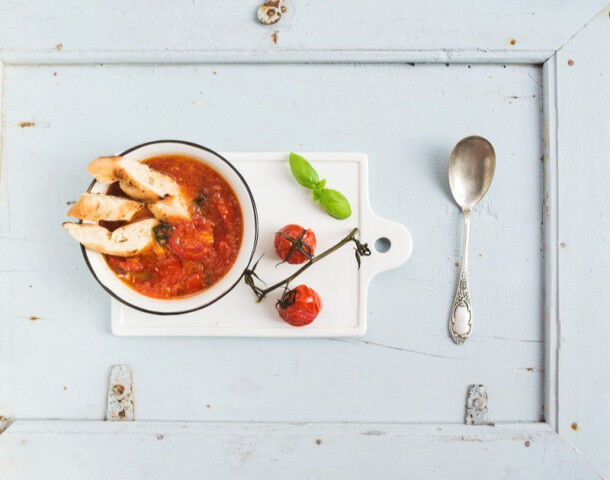
What is Pappa al Pomodoro ( Tuscan Bread and Tomato)?
Pappa, the dish closest to the heart in many parts of Tuscany, but especially in Florence, is simply bread cooked with oil and garlic, and seasoned with basil, with tomatoes as the essential base. This dish has become a symbol of the region's cuisine and is, alas, served all year round, even when it is not tomato season, but you should prepare it in the summer and not be tempted in other seasons by peeled tomatoes.The bread must be Tuscan, "sciocco" as they say in Tuscany.
It can be made more or less flavoursome with onion and chilli pepper but, strictly according to tradition, it must be served with a little finely chopped new garlic, which is not to everyone’s taste nowadays, so some restaurateurs omit it.
However, Pappa al Pomodoro, which is the expression of the tradition for Florentines, has an infinite variety of preparations: the subtle differences can almost reveal which neighbourhood, area or surroundings it comes from, although it is obviously fairly complicated to recognise.
When was Pappa al Pomodoro first made?
The origin of Pappa al Pomodoro depended on the introduction of white bread and its reuse, that is, a kind of soup made by adding broth and other ingredients. Originally it did not have tomato, in fact there is a "white", winter version, made only with garlic.
It should be noted that bread in Tuscany accommodates differences and varieties, in the sense that with the passage of time, bread has always welcomed new ingredients. Tomato was added to the ‘pappa bianca’, which thanks to the garlic also acts as a detoxifier (detox). At first, it was coloured in a concentrated version; later, fresh tomatoes were used.
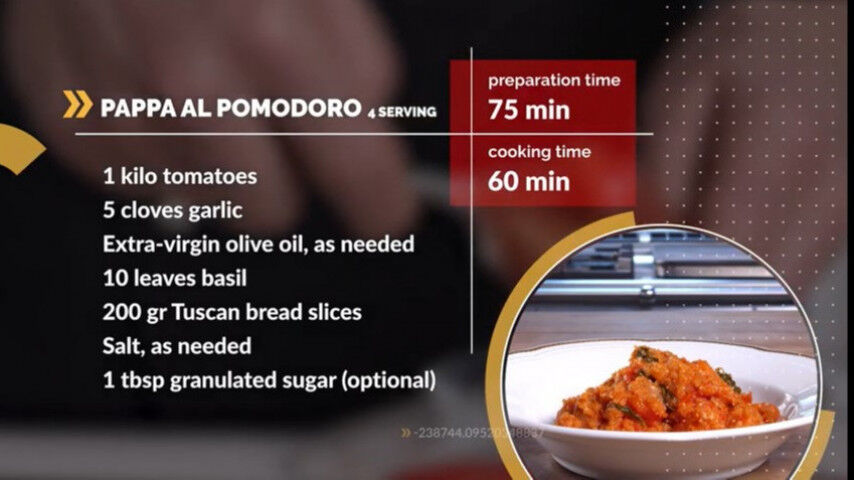
Which are ingredients in pappa al pomodoro?
- Ripe sauce tomatoes (or peeled tomatoes, including liquid)
- Garlic cloves
- Red onion
- Celery
- Carrot
- Handful of basil leaves (or sage, if not available)
- Tuscan bread
- Extra virgin olive oil
- Chilli powder (optional)
► Read the Recipe
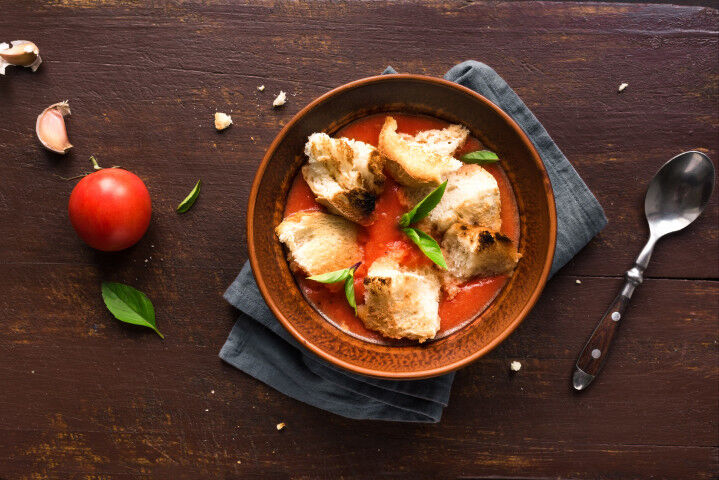
How should pappa al pomodoro be served?
It should always be served with basil on top and raw extra-virgin olive oil to add new aromas and liveliness to the dish. It can also be served as a base for adding other things on top of the pappa itself, such as mushrooms or burrata cheese, or even anchovies.
There are those who propose it as a flan, those who make it into a pudding... The important thing is that it is not served hot, but absolutely lukewarm!
How should Pappa al Pomodoro be reheated?
It is unusual for Pappa al Pomodoro to be left over because everyone loves it! However, if by chance some is left over, it is not so simple to reheat. The best way is in the microwave, because it tends to stick a lot because of the starch in the bread.
It does have a lot of resistance to heat, because it is very solid; especially when it cools down, it becomes compact and sticky.
The other tip is to add a little water and let it "re-cook" on a very low heat, avoiding stirring it with a ladle, so as not to put the starch back into circulation and therefore not make it sticky. The pappa al pomodoro must always be soft, smooth and airy.
Where to Eat the Best Pappa al Pomodoro in Florence?
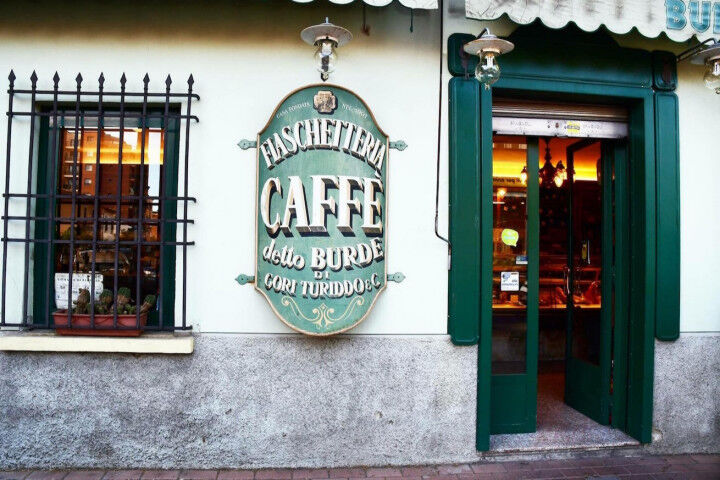
because it is as representative as you can get of a typical Florentine trattoria: tables and chairs in well-worn wood, paper placemats, menus communicated orally, and high quality ingredients, prepared with great respect.
because it is one of Florence's historic ‘bottegas’, founded in 1901, where tradition is not only spoken about, but really present in every dish - that is to say, they are careful to preserve nonna's recipes but use the techniques that today's times impose, and rightly so.
At Tramvai
for supreme conviviality and simple, tasty traditional cuisine, in the San Frediano district, one of Florence's most characteristic neighbourhoods.
What to pair with Pappa al Pomodoro?

A possible and tempting combination is with a white wine. The important thing is that it is full-bodied, aromatic and slightly soft. A white wine is best because it is a dish that is less suitable for cold outside temperatures ( so better in the summer) and a red wine would overpower the flavour of the tomato.
Slightly rounded, because it is a complementary concept, i.e. a wine with organoleptic (sensory) characteristics opposite to those of the food (fresh and savoury) which, by virtue of each sip, will be muted in its salient characteristics and rebalanced in perception.
A particularly rich bouquet of aromas in wine can give great satisfaction in "concordance" with the fragrance of basil.
A full-bodied white wine to "contrast" the apparent simplicity of the dish, which in reality has a particularly sharp, clear and sometimes accentuated taste due to the spices which may have been added.
Ultimately, I would go for a Chardonnay, a Sauvignon Blanc (perhaps cultivated in Tuscany) or even a Vernaccia di San Gimignano (Riserva) which has perhaps undergone a brief period of aging in wood
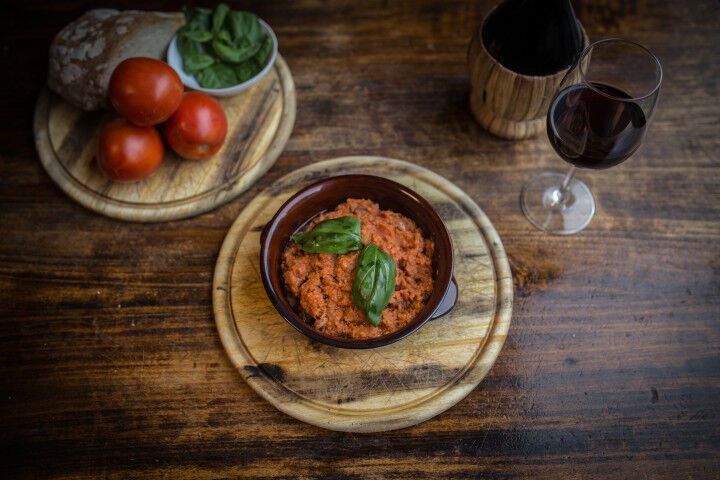
Why eat Pappa al Pomodoro?
In Tuscany they say "mangia la pappa (al pomodoro) perché ti fa bello" (eat the tomato pappa because it makes you beautiful). Apart from this cute regional saying, it is a great dish to use up ingredients, with a view to not wasting food, making the most of leftovers and practising a circular economy. It is a dish that during the summer months allows you not to boil water: in short, it is a fresh, sustainable, recycling dish.
Therefore there are many stimulating reasons for eating it.
You might be interested in:
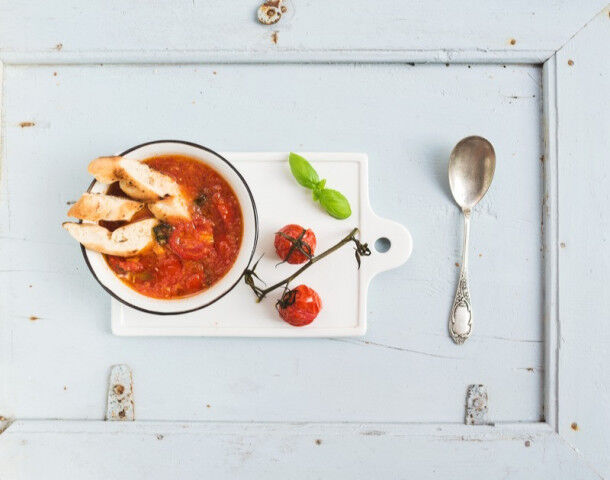
all.sign in to leave a review







